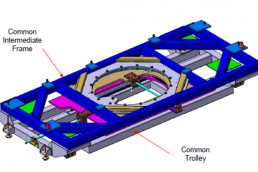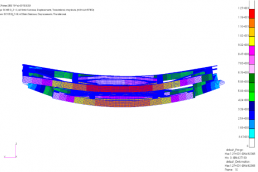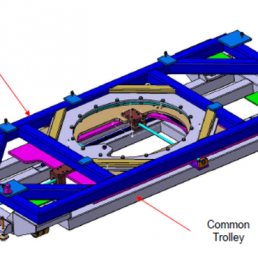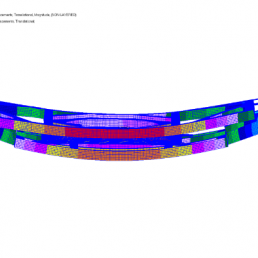Task Objectives - Tooling Stress Analysis
Airframe Designs was engaged by KAMAN Tooling to provide tooling stress analysis expertise and guidance to support the design of tooling required for the manufacture and transportation of ASTRIUM Galileo Satellite structures.
The following tool is a welded steel frame with machined pads, and includes bolt-on aluminium plates, jacking points, lifting eyes, and tooling fixtures. This is one of many tools assessed under this programme of work.
Technical Requirements
The technical requirements imposed by KAMAN covered industry standard static strength for hoisting, general transport, and factory movement.
The load conditions involved directional inertias combined with high safety factors. The requirements also specified permissible maximum deflections (to control stiffness) and stability requirements to ensure the structure would not topple during transportation.
The analysis had to take account of welding knock-down factors for the Heat Affected Zone around welded joints.
Static Strength Substantiation
For static strength, a finite element model (FEM) was prepared and loaded with inertia conditions using NASTRAN GRAV cards.
The mass and centre of gravity (CG) in the model was required to accurately represent reality. Inertias up to 3g were applied to the model in various directions and then combined with Safety Factors of 2.0 for Yield and 3.0 for Ultimate Strength.
All elements were then checked to ensure they possessed adequate static strength and behaviour under YIELD & ULTIMATE loading conditions.
Deflection / Stiffness Substantiation
In order to assess the deflection and stiffness of the structure, the FEM deflection results were compared with deflection limits at critical tooling locations. The following deflection plot examines Z-direction deflection
under critical vertical loads.
Stability Evaluation
Stability can be an issue with tall and/or narrow tools. A high vertical CG needs to be counteracted by a wide base in order to prevent a tool from toppling over.
The trolley itself has a very low base but the payload is tall and narrow, thereby raising the vertical CG significantly.
In order to check for stability, requirements of BS EN1915 (Aircraft Ground Support Equipment Specification) were imposed that required the restoring moment due to vertical ‘g’ to be at least 1.2 x the tipping moment due to lateral ‘g’.
Testimonial
(Paul Barrett – Technical Director)
“AFD stands out from other suppliers because they offer an expert service in the field of stress analysis combined with an efficient and immediate response to Requests for Quotation. When we engage with AFD, we have confidence that the Stress Report will be returned on time and to the right quality and this is key to supporting our outsourcing decisions and removing risk from our programmes”.

